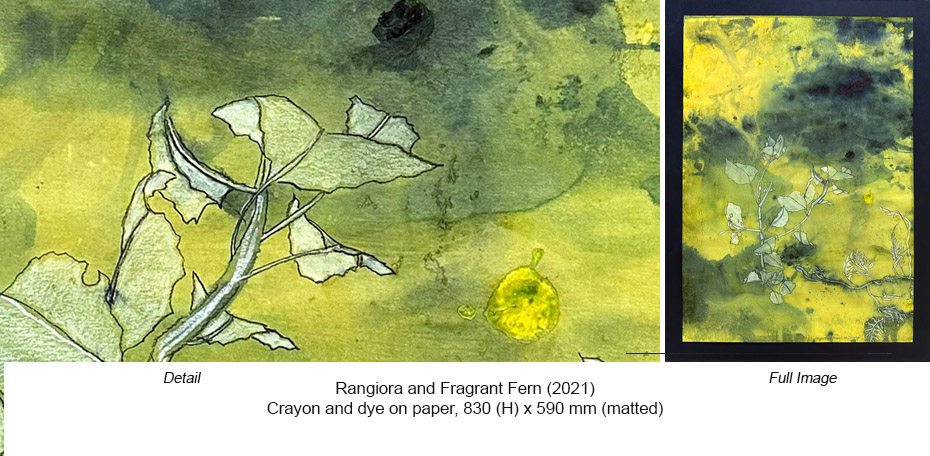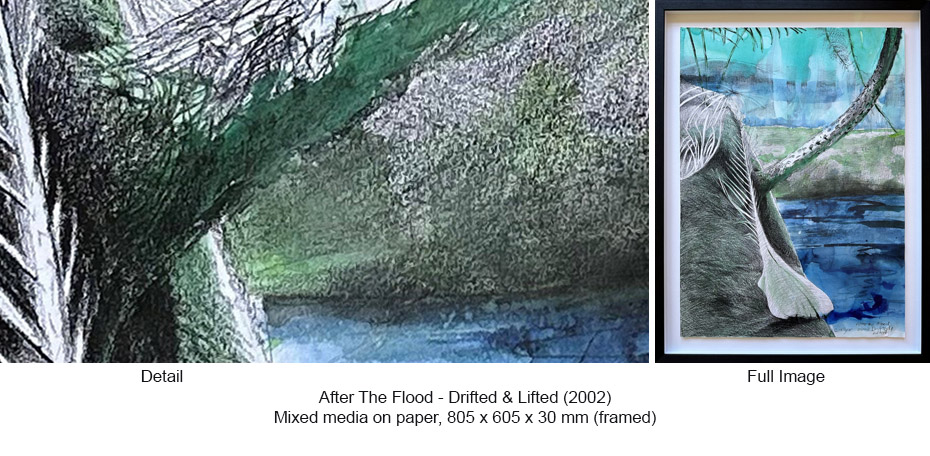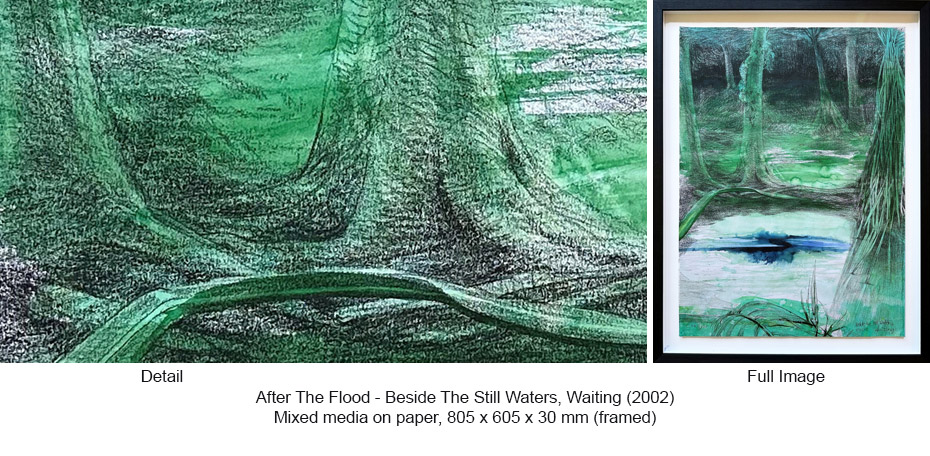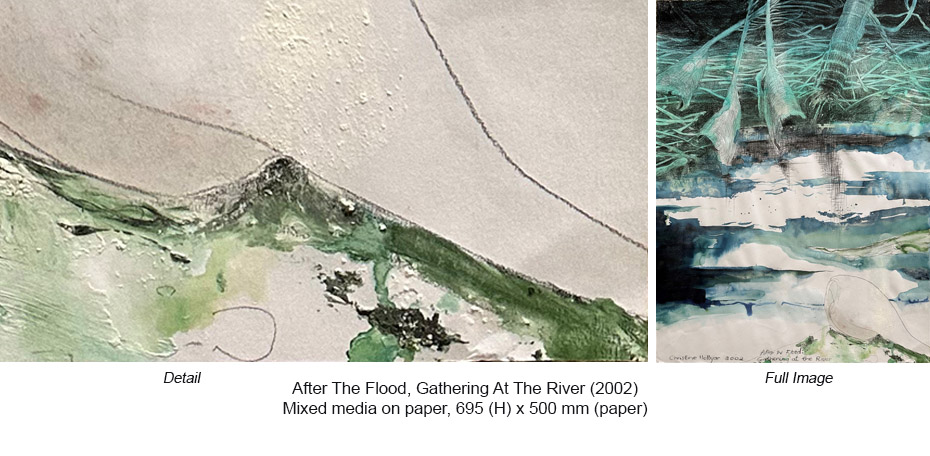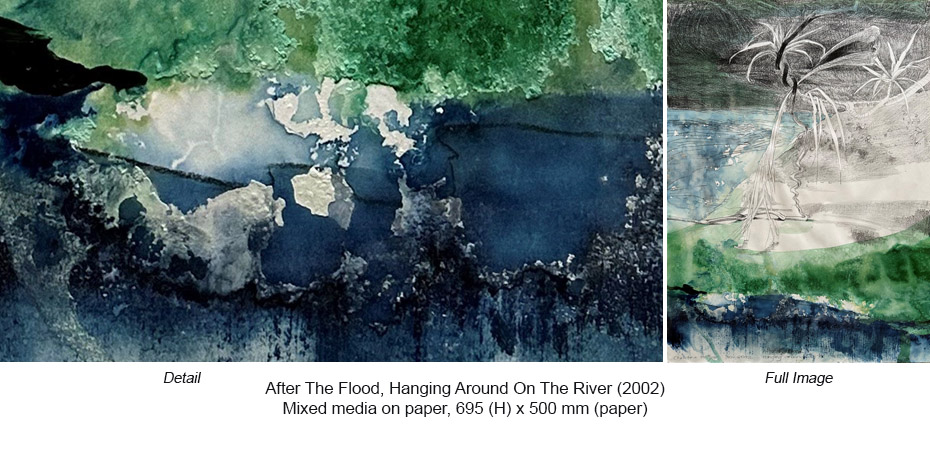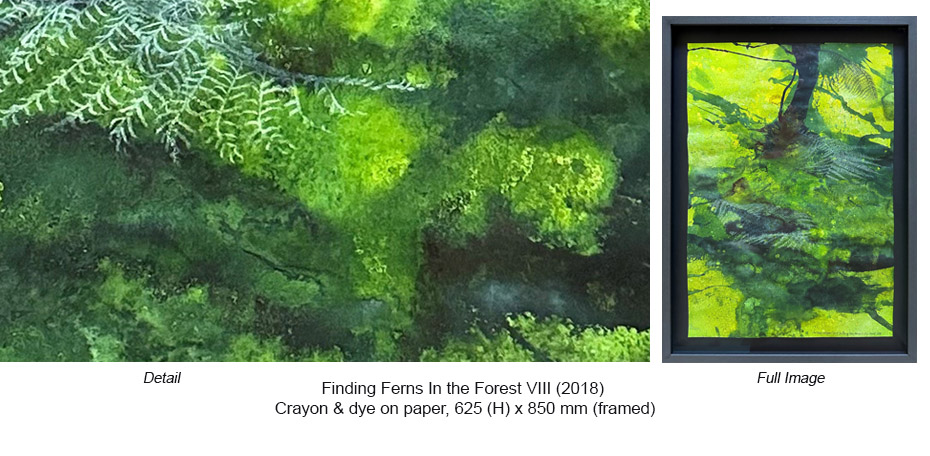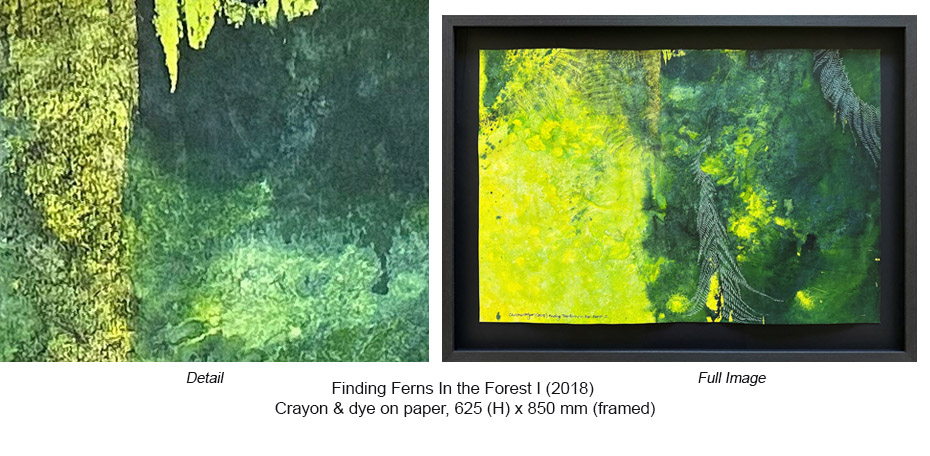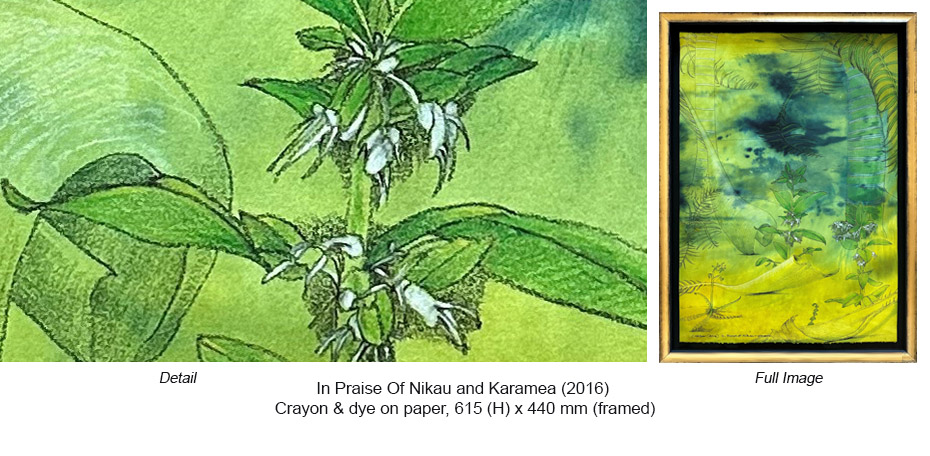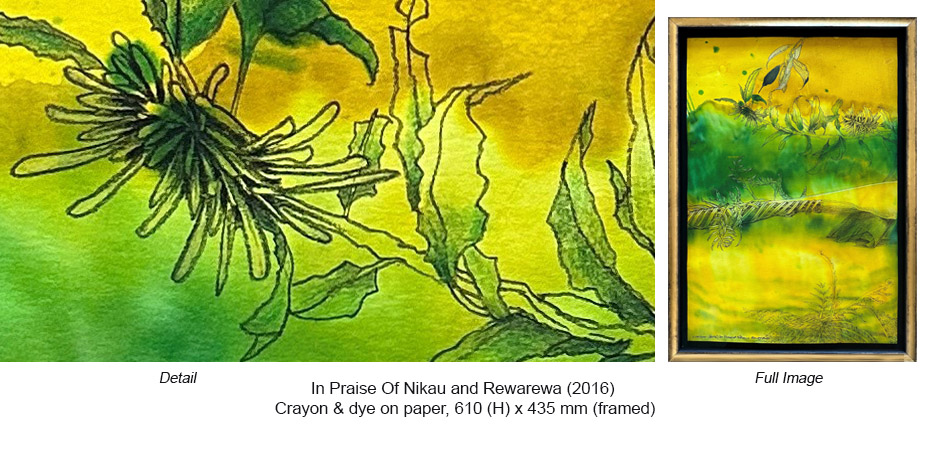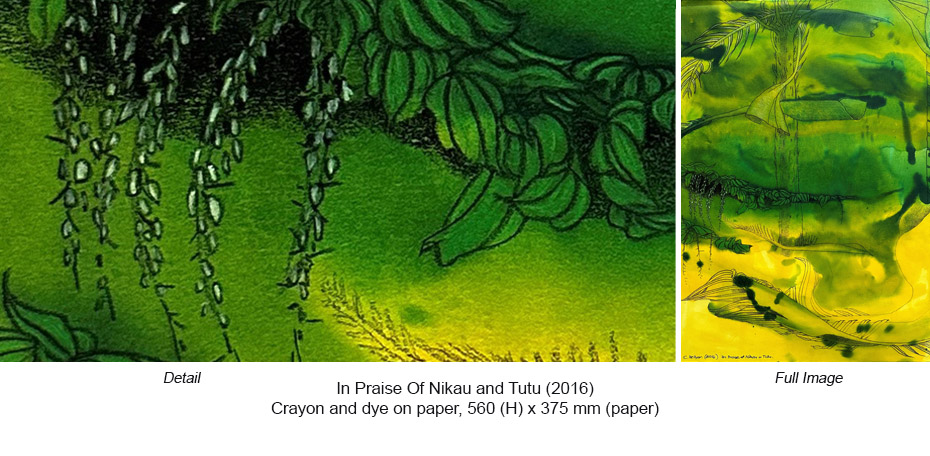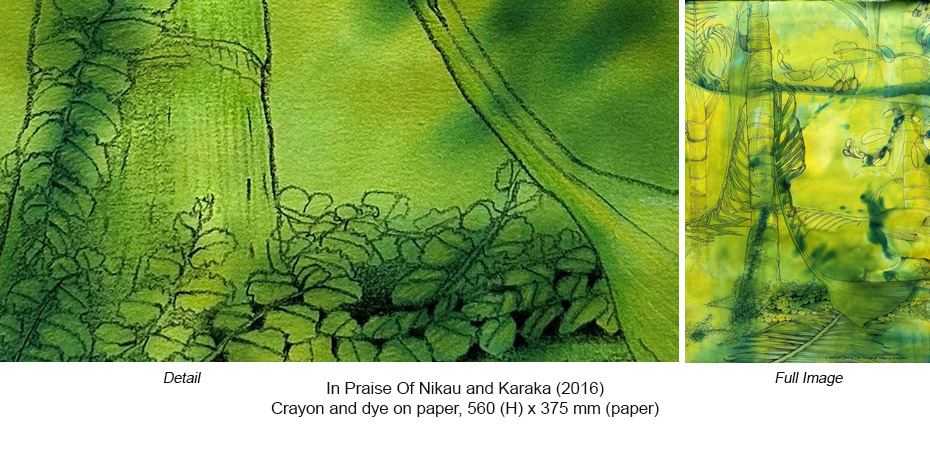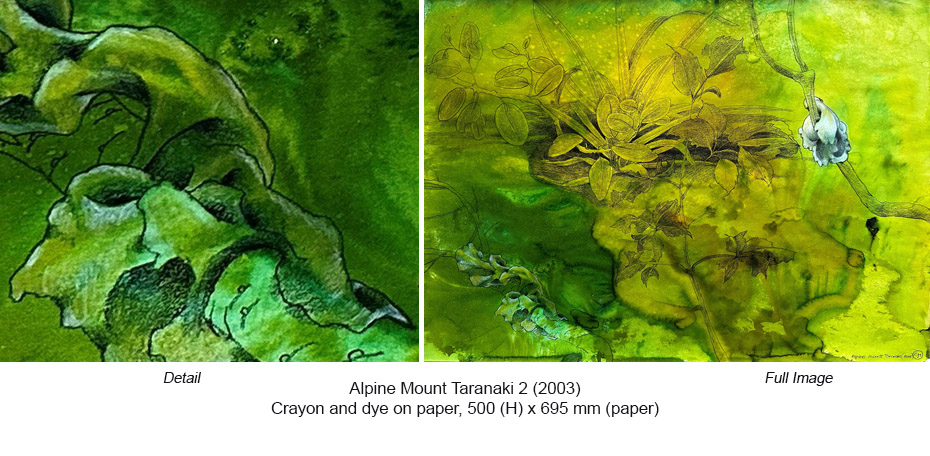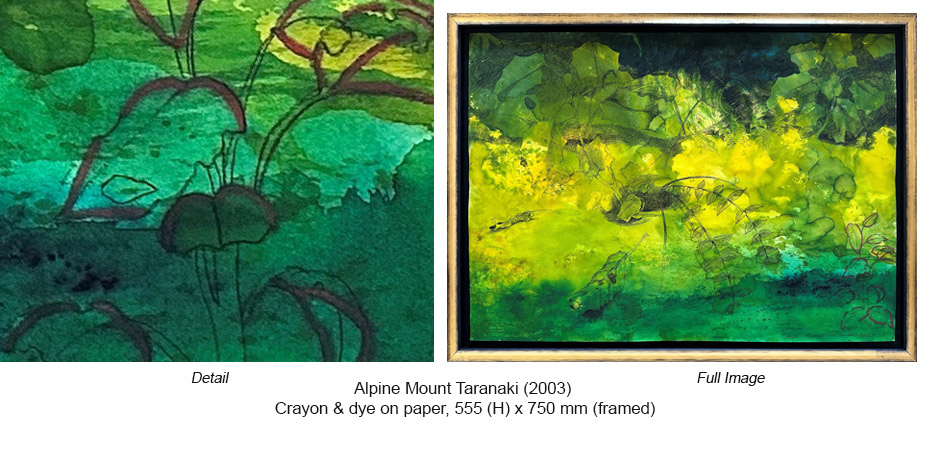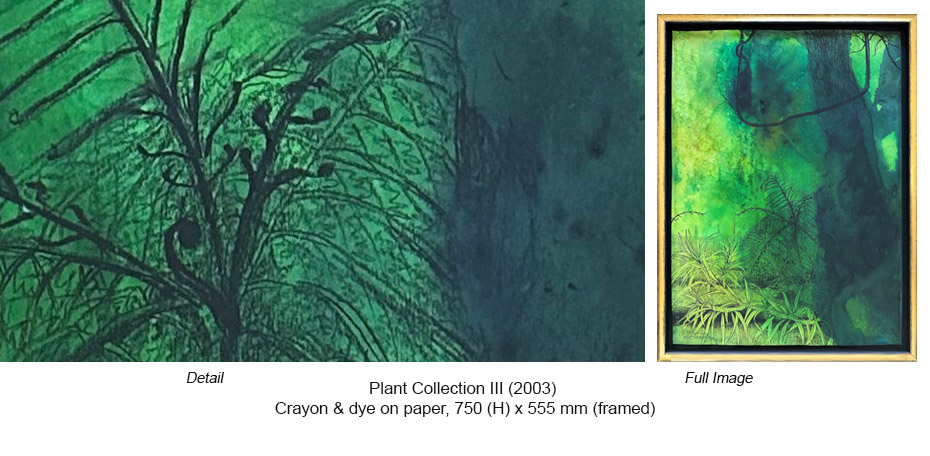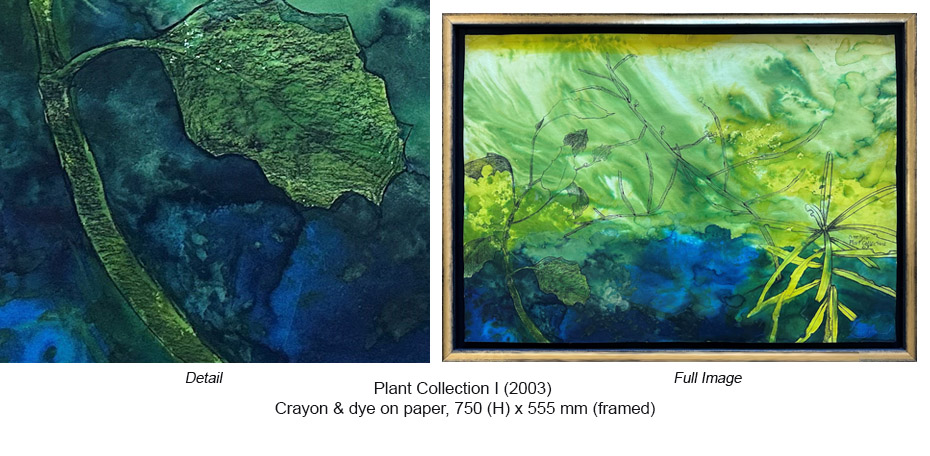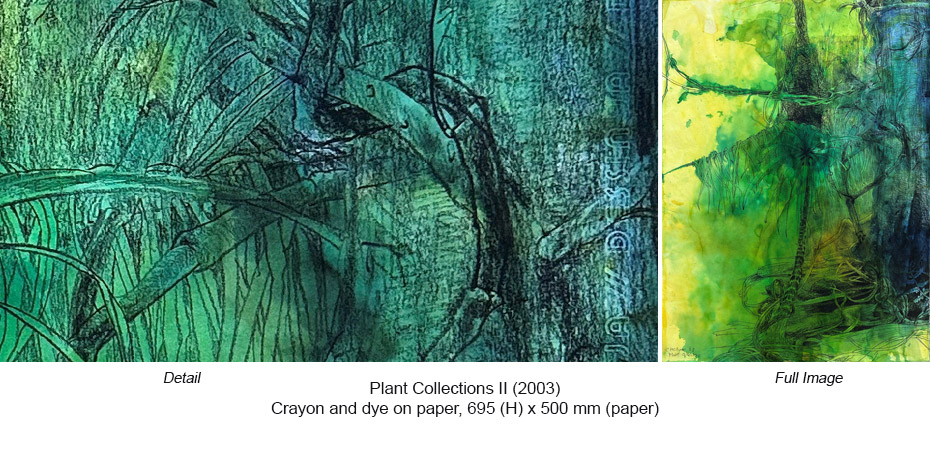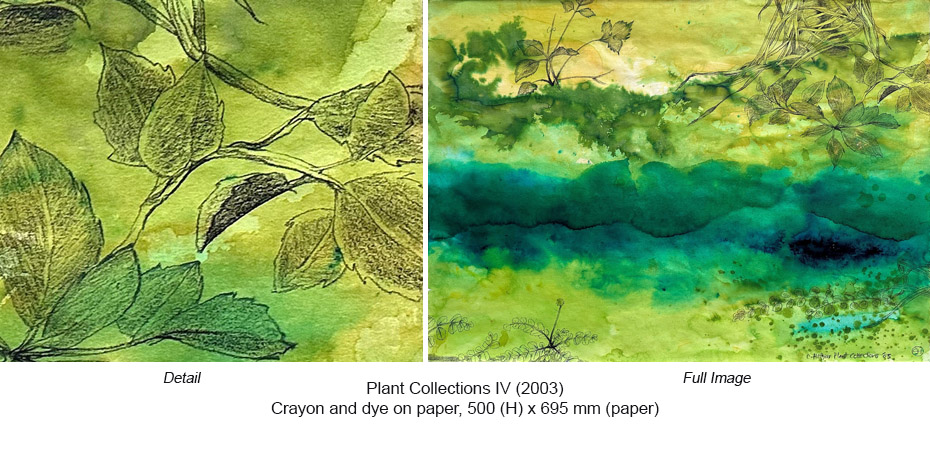Christine Hellyar Botanical Drawings
Always inspired by the beaches and bush around her home town, Christine Hellyar won a Department of Conservation residency in 2003. She spent six weeks living in a hut on Mount Taranaki drawing and creating sculptures. Her focus was on the differing vegetation in the various micro-climates on the mountain, particularly the high and low parts where she felt totally encased in bush. Hellyar saw her Alpine Mt Taranaki drawings as a walk – “walking, and the lovely things that happen along the sides as you walk, are an important part of being up the mountain”.
Drawings from Hellyar’s Plant Collections (2003) series emphasise that, rather than picking plants, she collects them by drawing them. In Praise of Nikau (2016) was as a celebration of the Nikau Track and her favourite palm. The Flood drawings (2005) were “a way of bringing the biblical to Piha – I know the tracks and streams out there and enjoy the extra water heavy storms bring. It’s also a way of bringing light that is not linear into the forest.”
“Drawing is lovely but you can’t just draw – it has to go somewhere else – it has to be more meaningful – it has to take on another life beyond drawing. I like crayon and dye and use a lot of each – it’s partly playing with materials and with ideas that you think are uniquely yours, and trying to say something that you can’t actually say in sculpture. You can’t say everything that’s in your head in one particular medium or one particular art discipline.”
Christine Hellyar Background
Hellyar was born in 1947 in New Plymouth. She completed a Diploma in Fine Arts (Hons) at the Elam School of Art in 1970. Working in both sculpture and installation, Hellyar’s work incorporates a wide range of materials, from found natural items such as grass and stones, to clay, fabric and plaster, latex, lead and bronze for casting.
Over the years, consistent themes in Hellyar’s work have included ‘her celebration of the environment, her interest in people’s interaction with nature, the validation of the domestic and a questioning of traditional gender roles’.
In 1981, Hellyar took up a part-time teaching position at Elam, School of Fine Arts, University of Auckland where she remained until 1996, when she left to work full time in her studio. During this time, she was awarded the first Adam Award for her significant contribution to New Zealand Art. This afforded her the opportunity to complete her first large outdoor bronzes.
Hellyar won the Department of Conservation residency (Mount Taranaki) in 2003 and in 2005 she participated in the Tylee Cottage Residency at Whanganui’s Sarjeant Gallery. In 2009 she won the McConnell Properties Stoneleigh Sculpture Award and in 2011 she was the resident botanic artist at the Auckland Botanic Gardens.
Exhibiting consistently in New Zealand and internationally since the 1970s, Hellyar’s work has been included in major exhibitions including the 1982 Biennale of Sydney; When Art Hits The Headlines (National Art Gallery, Wellington 1987); NZXI (Auckland City Art Gallery, Art Gallery of New South Wales, Sydney, and Contemporary Art Institute, Brisbane, 1988); Three from NZ (Long Beach Museum of Art, Los Angeles, 1990); Headlands (MCA, Sydney, 1992); and Treasures of the Underworld (New Zealand Pavilion at the 1992 Seville Expo, Amsterdam and various New Zealand venues, 1992 to 1994).
Hellyar’s work is held in most New Zealand public collections, including the Auckland Art Gallery, Govett-Brewster Art Gallery, Museum of New Zealand Te Papa Tongarewa and the Christchurch Art Gallery. She was an active member of the New Zealand Society of Sculptors and Painters and is now an active member of “Outdoor Sculpture 2001” which celebrated the new millennium by installing eight new permanent sculptures in the Auckland Domain.
In a career spanning 50 years, with shows in Australia, the USA, England, Holland, Spain, Hungary, Japan, Korea and Singapore, Hellyar has made and exhibited over 750 sculptures, 15 large installations and countless paintings, drawings and photographs. She now works mainly in fibre for indoor sculpture, and bronze for outdoor sculpture. Her 2D work is in a wide range of media.


